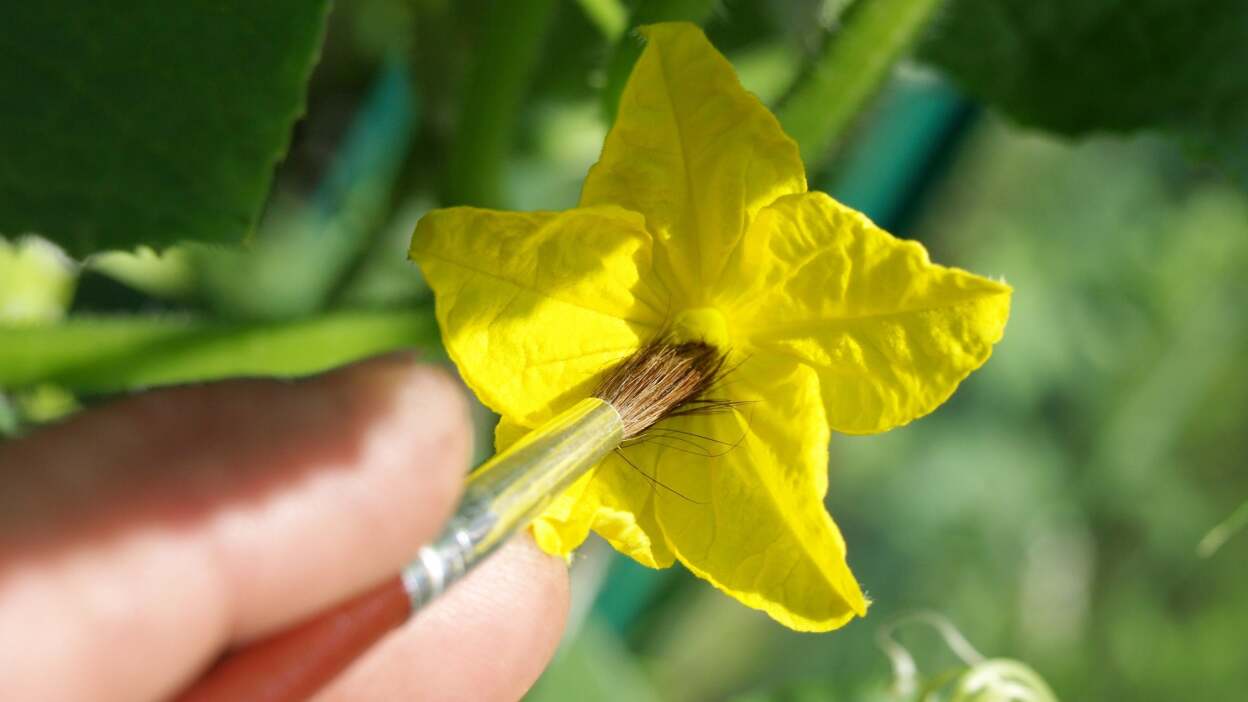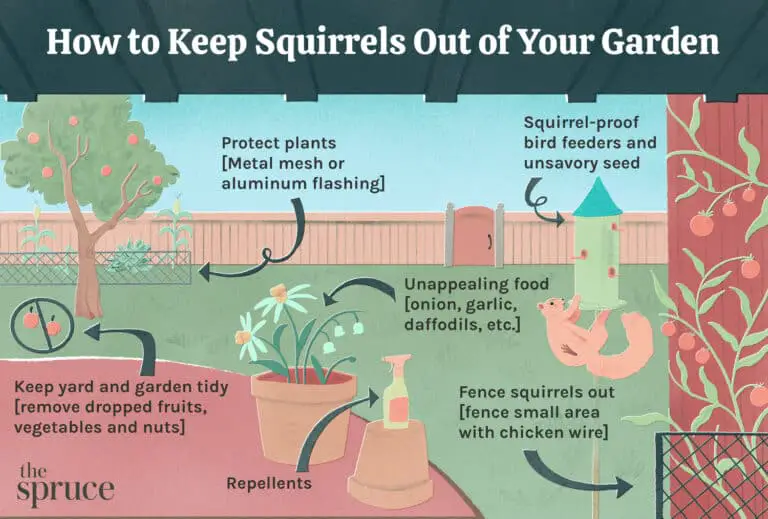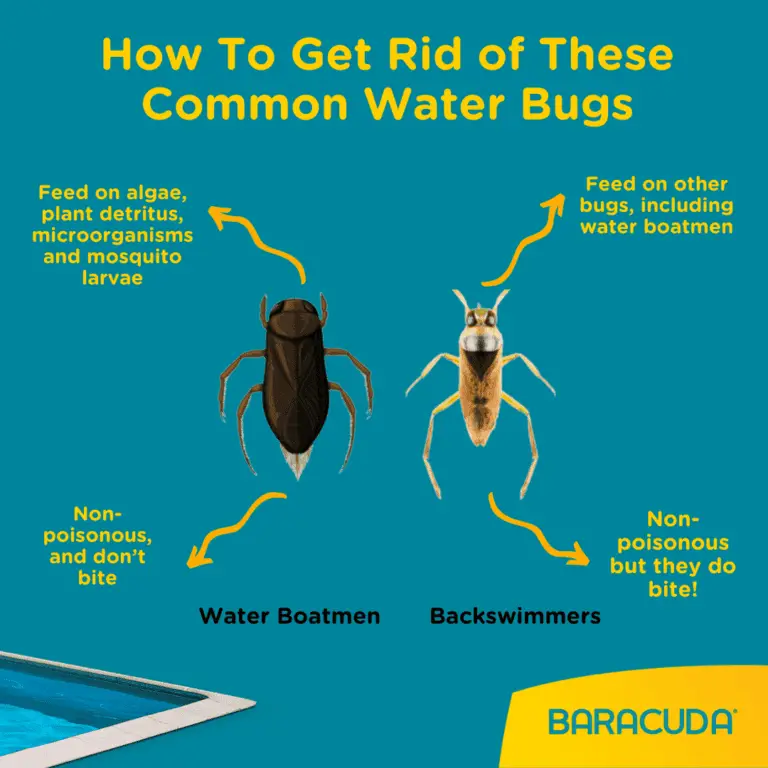Hand Pollinate These Fruits And Veggies To Grow More: Boost Your Harvest
Hand pollination helps increase fruit and vegetable yield. It ensures proper pollination when natural pollinators are scarce.
Hand pollination is a useful technique for gardeners aiming to boost their harvest. This method involves manually transferring pollen from one flower to another. It is particularly beneficial for plants like tomatoes, squash, and cucumbers, which may not always get adequate pollination from bees or other insects.
By hand pollinating, you can ensure that each flower sets fruit, leading to a more abundant harvest. This practice is simple and can be done using tools like a small brush or even your fingertips. Hand pollination is an effective way to maximize your garden’s productivity and enjoy a bountiful harvest.
Introduction To Hand Pollination
Growing your own fruits and vegetables can be rewarding. To maximize your harvest, consider hand pollination. This method can help boost yields for certain plants. Let’s dive into the details of hand pollination.
Why It’s Important
Hand pollination helps plants that struggle with natural pollination. Sometimes, bees and other insects can’t reach all flowers. This can be due to weather or fewer insects around. Hand pollination ensures your plants get the help they need.
Some plants have flowers that open for just one day. Missing this window can mean no fruit. Hand pollination can also improve fruit quality and size. It’s a simple way to make sure your plants thrive.
Basic Techniques
Hand pollination is easy with a few tools. You’ll need a small brush or cotton swab. These help transfer pollen from one flower to another.
Step-by-step guide:
- Identify male and female flowers. Male flowers have thin stems. Female flowers have a tiny fruit at their base.
- Collect pollen from the male flower. Gently brush the inside of the male flower.
- Transfer the pollen to the female flower. Brush the inside of the female flower.
Repeat this process for all flowers needing pollination. Early morning is the best time for hand pollination. This ensures the pollen is fresh and dry.
Remember to clean your tools between plants. This prevents cross-contamination and ensures healthy plants.
Hand pollination can be fun and easy. It helps you get the most from your garden. Happy gardening!
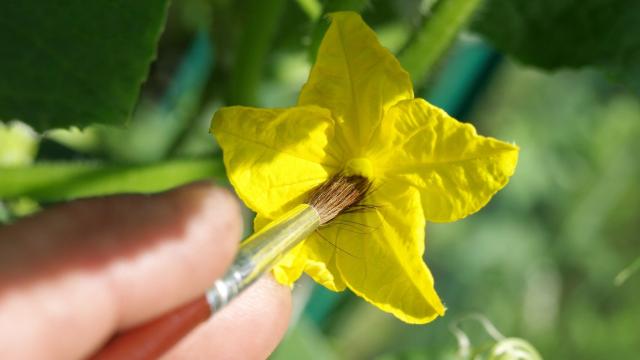
Credit: www.lifehacker.com.au
Tools For Hand Pollination
Hand pollination can help boost your garden’s fruit and vegetable yield. Using the right tools can make this process easier and more effective. In this section, we’ll explore the essential equipment and DIY tools for successful hand pollination.
Essential Equipment
Using the right equipment ensures successful hand pollination. Here are some must-have tools:
- Soft Paintbrush: Ideal for transferring pollen gently.
- Cotton Swabs: Convenient for small flowers and delicate plants.
- Tweezers: Useful for handling delicate pollen grains.
- Magnifying Glass: Helps you see tiny flowers and pollen.
These tools are easy to find and simple to use. They can significantly improve your pollination results.
Diy Tools
If you prefer making your own tools, try these DIY ideas:
- Feather Pollinator: Attach a small feather to a stick. Use this to gently transfer pollen.
- Electric Toothbrush: Gently vibrate flowers to release pollen. This method is great for tomatoes.
- Makeup Brushes: Repurpose clean makeup brushes for delicate pollination tasks.
These DIY tools are cost-effective and often work just as well as store-bought options. They can help you pollinate more plants and grow more fruits and veggies.
Tomatoes
Tomatoes are a favorite among home gardeners. They are versatile and delicious. Hand pollination can help increase your yield. This is especially useful in indoor or greenhouse settings.
When To Pollinate
Tomatoes have flowers that are self-pollinating. This means they contain both male and female parts. The best time to hand pollinate is during the morning. This is when the flowers are most receptive.
Pollinate every two to three days. Start when you see the first flowers bloom. Continue until the fruit sets.
How To Pollinate
Hand pollination of tomatoes is easy. Follow these steps:
- Use a small, soft paintbrush or cotton swab.
- Gently touch the inside of each flower.
- Move from flower to flower. This transfers the pollen.
- Repeat the process every few days.
Another method involves gently shaking the plant. This helps the pollen move. Do this in the morning for the best results.
| Tools | Frequency | Best Time |
|---|---|---|
| Paintbrush or cotton swab | Every 2-3 days | Morning |
| Hand shaking | Every 2-3 days | Morning |
Hand pollinating tomatoes can be fun. It ensures a higher yield. Try it and enjoy more tomatoes from your garden!
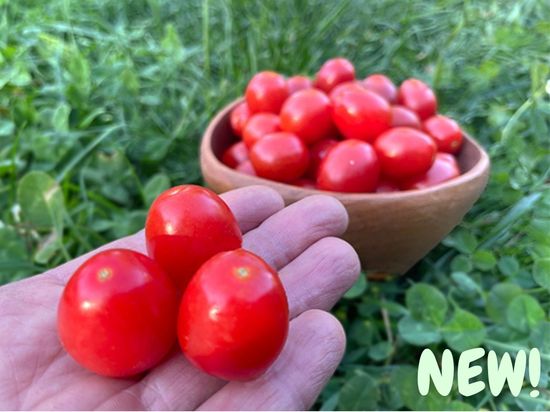
Credit: natureandnurtureseeds.com
Squash And Zucchini
Growing squash and zucchini can be a rewarding experience. These vegetables are known for their delicious taste and nutritional benefits. However, they sometimes need a little help with pollination to produce more fruit. Hand pollination can increase your harvest significantly.
Identifying Male And Female Flowers
To hand pollinate squash and zucchini, you first need to identify the male and female flowers.
- Male flowers are on long, thin stems.
- Female flowers have a small fruit at the base.
Here’s a table to help you spot the differences:
| Flower Type | Characteristics |
|---|---|
| Male | Long, thin stem |
| Female | Small fruit at base |
Pollination Steps
Hand pollination is simple and effective. Follow these steps:
- Find a male flower early in the morning.
- Remove the petals to expose the pollen.
- Locate a female flower ready to be pollinated.
- Gently brush the pollen onto the stigma of the female flower.
Repeat these steps for each flower you want to pollinate. This will help you grow more squash and zucchini. Happy gardening!
Cucumbers
Cucumbers are a favorite among home gardeners. These crunchy and refreshing vegetables thrive with proper care. Hand pollination can boost your cucumber yield significantly. It’s an easy and rewarding process. Let’s dive into the specifics of hand pollinating cucumbers.
Best Time For Pollination
The best time to hand pollinate cucumbers is in the morning. Pollination is most effective between 6 AM and 10 AM. During this time, flowers are open and receptive. Ensure that you pick a sunny day. Rain or high humidity can affect pollination success.
Ensuring Success
To ensure successful pollination, identify the male and female flowers. Male flowers have slender stems. Female flowers have a small cucumber-shaped ovary at their base.
- Step 1: Locate male flowers first.
- Step 2: Use a small brush or cotton swab. Gently collect pollen from the male flower.
- Step 3: Transfer the pollen to the stigma of the female flower. Repeat this process for each female flower.
Hand pollination can be done daily during the blooming period. This ensures all female flowers get pollinated. Monitor your plants regularly. Remove any damaged or diseased flowers promptly.
| Step | Action |
|---|---|
| 1 | Locate male flowers. |
| 2 | Collect pollen with a small brush. |
| 3 | Transfer pollen to female flowers. |
Hand pollinating cucumbers is a simple task. With practice, it becomes a quick daily routine. Boost your cucumber harvest by ensuring each flower gets the attention it needs.
Melons
Growing melons in your garden can be very rewarding. These juicy fruits thrive in warm climates and need proper pollination to bear fruit. Sometimes, natural pollination is insufficient, so hand pollination can help ensure a bountiful harvest.
Hand Pollination Tips
Follow these tips to successfully hand pollinate melons:
- Identify male and female flowers: Male flowers have a thin stem, while female flowers have a small fruit at the base.
- Collect pollen from male flowers: Use a small brush or cotton swab to gather pollen from the male flower’s center.
- Transfer pollen to female flowers: Gently brush the collected pollen onto the stigma of the female flower.
- Pollinate in the morning: Flowers are most receptive to pollen in the early morning.
- Repeat for better results: Pollinate multiple flowers to increase the chances of fruit development.
Common Mistakes
Avoid these common mistakes during hand pollination:
- Incorrect flower identification: Mixing up male and female flowers can lead to failed pollination.
- Using too much force: Be gentle to avoid damaging the delicate flower parts.
- Pollinating at the wrong time: Pollinating in the afternoon reduces the chances of success.
- Ignoring cross-pollination: Ensure you pollinate flowers from different plants to improve genetic diversity.
Peppers
Peppers are a favorite in many gardens. They add color and flavor to dishes. Growing peppers can be rewarding. Hand pollination can boost your pepper yield significantly.
Maximizing Yield
Maximizing your pepper yield involves a few simple steps. First, ensure your pepper plants are healthy. Use good soil and provide ample sunlight. Healthy plants produce more flowers and fruits.
Next, monitor your plants for flowers. Flowers are the key to fruit production. Hand pollination can help when natural pollinators are scarce. Aim to pollinate the flowers early in the morning.
| Steps to Maximize Yield | Details |
|---|---|
| Healthy Soil | Use well-draining soil with compost. |
| Sunlight | Ensure 6-8 hours of sunlight daily. |
| Watering | Keep soil moist but not waterlogged. |
| Hand Pollination | Pollinate flowers early in the morning. |
Pollination Techniques
Hand pollination is easy and effective. Use a small, soft brush or a cotton swab. Gently transfer pollen from one flower to another. This mimics the work of bees and other pollinators.
- Identify open flowers on your pepper plants.
- Use a brush to collect pollen from the male part (anther).
- Carefully brush the pollen onto the female part (stigma).
- Repeat this process for each flower.
Repeat the pollination process every few days. This ensures all flowers get pollinated. More pollinated flowers mean more peppers.
Hand pollination works best in the morning. The flowers are open and ready for pollination. Avoid pollinating during wet or humid conditions.
Using these techniques, you can grow more peppers. Hand pollination is simple and effective. Try it in your garden this season.

Credit: www.youtube.com
Pumpkins
Growing pumpkins in your garden can be incredibly rewarding. They are fun to grow and can yield a bountiful harvest. However, to get the best yield, you may need to hand pollinate them. Hand pollination can ensure that your pumpkins grow larger and more plentiful. Let’s explore some tips and best practices for hand pollinating pumpkins to improve your fruit set and overall yield.
Improving Fruit Set
Hand pollination can significantly improve the fruit set of your pumpkins. This is especially important if natural pollinators are scarce.
- Identify male and female flowers. Male flowers have a straight stem, while female flowers have a small bulbous fruit at the base.
- Use a small brush or cotton swab. Gently transfer pollen from the male flower to the female flower.
- Pollinate in the morning. This is when flowers are most receptive to pollen.
- Repeat the process. Do this every few days to ensure good pollination.
Pollination Best Practices
Following the best practices for hand pollination can lead to a more successful pumpkin harvest.
| Best Practice | Description |
|---|---|
| Timing | Pollinate early in the morning for best results. |
| Equipment | Use a soft brush or cotton swab for transferring pollen. |
| Frequency | Hand pollinate every few days to ensure coverage. |
| Environment | Maintain a healthy garden environment to attract natural pollinators. |
By following these best practices, you can ensure your pumpkins receive the pollination they need. This will lead to a more abundant and healthier harvest.
Troubleshooting Pollination Issues
Sometimes, hand pollination doesn’t go as planned. You might see fewer fruits or veggies. Let’s explore common problems and solutions.
Common Problems
- Lack of Pollinators: No bees or insects around.
- Improper Technique: Incorrect pollination methods.
- Weather Conditions: Too hot, cold, or rainy.
- Poor Plant Health: Plants are weak or diseased.
Solutions
Here are some ways to solve pollination issues:
- Introduce Pollinators: Grow plants that attract bees. You can also use artificial pollinators.
- Improve Technique: Use a small brush or cotton swab. Gently transfer pollen from flower to flower.
- Control Weather Exposure: Use row covers to protect plants. Ensure they get enough sunlight and water.
- Boost Plant Health: Use compost and organic fertilizers. Prune damaged leaves and stems.
Frequently Asked Questions
How Do You Hand Pollinate Zucchini?
Use a small brush to transfer pollen from male to female flowers. Do this early in the morning for best results.
Why Hand Pollinate Tomatoes?
Hand pollination ensures fruit set, especially in low-wind or low-bee areas. Gently shake flowers to distribute pollen.
What Tools Do I Need For Hand Pollination?
You’ll need a small brush or cotton swab. These help transfer pollen between flowers effectively.
Conclusion
Hand pollination can significantly boost your garden’s productivity. By taking a hands-on approach, you’ll ensure better fruit and veggie yields. This simple technique helps overcome pollination issues and guarantees a bountiful harvest. Start hand pollinating today for healthier and more abundant crops in your garden.
Happy gardening!

